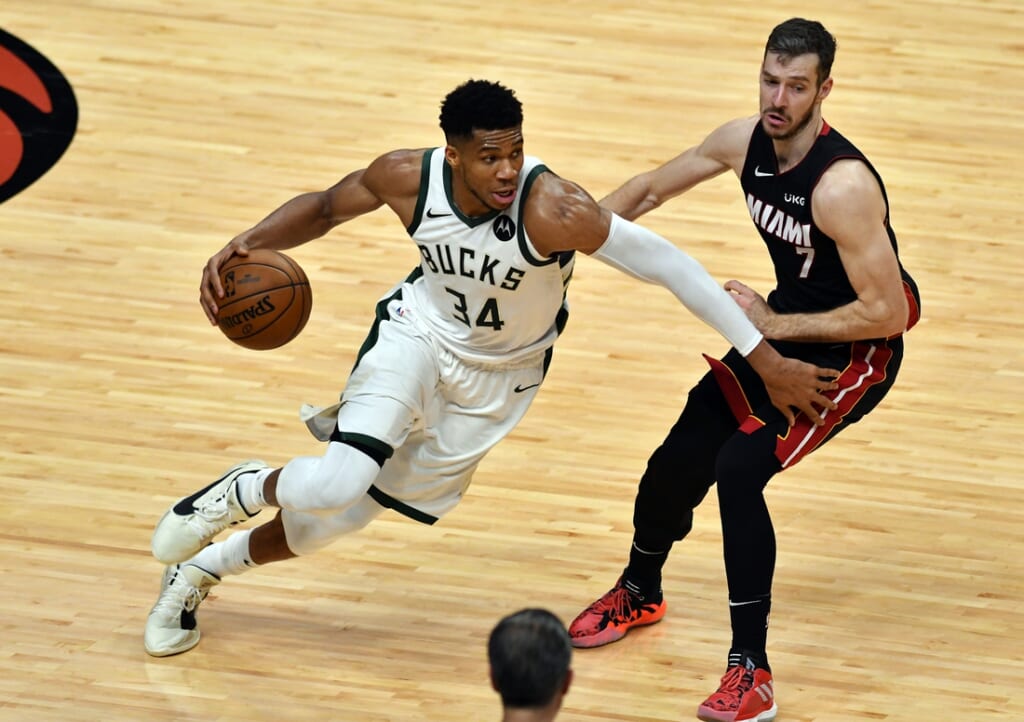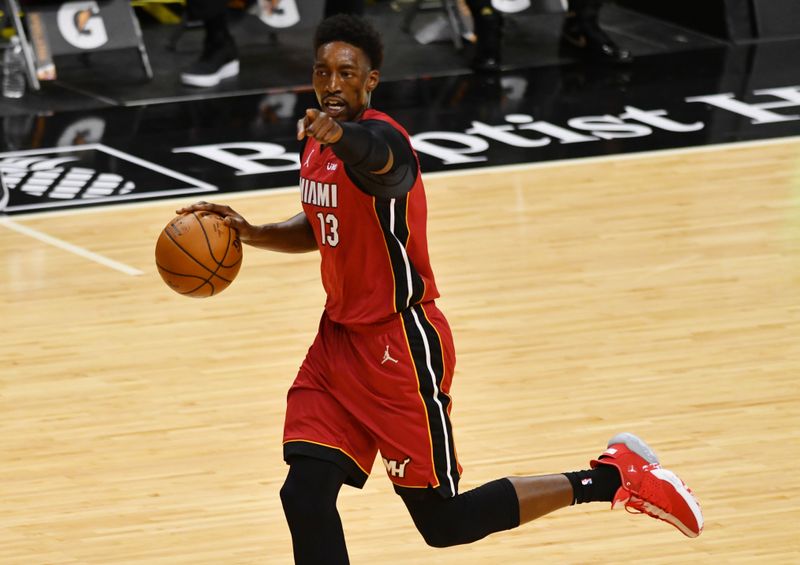
The 2020-’21 NBA season for the Miami Heat did not go as expected. They entered the season with a 71-day offseason, which ended up being the shortest break in league history.
Miami battled through COVID-19 early in the season and dealt with a plethora of injuries from Goran Dragic to Victor Oladipo, who played four games before suffering a season-ending knee injury.
The season didn’t end as expected either, as the Heat were swept in the first round by the Milwaukee Bucks after falling to the No. 6 seed in the Eastern Conference. Here’s a look into the Heat’s unpredictable 2021 season.
Examining Miami’s strengths
The Heat didn’t have many glaring strengths, but their defense is something this team could take pride in. Miami finished the regular season with the 10th best defensive rating at 110.7, finding different ways to use its defensive-minded players to great effect.
While Bam Adebayo wasn’t a Defensive Player of the Year finalist, there is arguably no other player in the NBA better at defending guards and centers at his size.
Jimmy Butler also led the entire NBA with 2.1 steals per game this season. The Heat had two of the best defenders in the NBA, which played into their favor in crunch time.
Miami ranked 29th in the NBA with only 97.09 possessions per game. It wanted to slow the game down and use their biggest strength to its fullest potential.
This team also stood out defending the paint. The Heat were the best team in this area, allowing just 41.3 points in the paint per game.
However, the Heat allowed 47.0 points in the paint per game against the Milwaukee Bucks, which could have something to do with the volume of offensive rebounds they allowed. Which ties into what doomed Miami in the NBA Playoffs.
Where the Heat fell short

The Heat’s offense during the 2020-2021 season was not up to par as it was last year. After being the second-best three-point shooting team in the league during the 2020 season, they ranked 19th this year at 35.8% per game.
Miami also ranked 18th in the NBA with a 110.6 offensive rating after having the seventh-best last year. There were a few areas where their struggles were glaring, but Miami started to get better as the regular season came to end.
However, the NBA Playoffs were a disaster for the Heat on offense. Before Game 4, Miami was on pace to have the worst field goal percentage in the playoffs (38%) since the 2005-’06 Denver Nuggets.
They were also on pace to have the worst two-point field goal percentage in the NBA Playoffs at 41.0% since tracking began in 2013-’14. Miami did enough in Game 4 to avoid these historic marks, but it wasn’t enough to extend the series.
Another glaring weakness for the Heat was the number of offensive rebounds they allowed per game. In the regular season, they ranked eighth in the NBA with 9.5 offensive rebounds allowed per game.
That number sky-rocketed in the NBA Playoffs when they allowed 15.3 offensive rebounds per game against the Milwaukee Bucks. This is the worst in the playoffs since the 2011-2012 Denver Nuggets.
All of this combined led to Miami being swept in the first round. Some of it was noticeable in the regular season, but the playoffs blatantly exposed these weaknesses that may have been underlying issues.
Falling to reach high expectations

After reaching the NBA Finals last season, many expected Miami to be even better this time around. While the Heat showed those peaks at times, they crashed down to earth when it mattered.
Bam Adebayo and Tyler Herro making big jumps were supposed to help that cause, but the Heat’s second-year guard didn’t show the desired improvement over last season.
Herro averaged 15.1 points, 5.0 rebounds, and 3.4 assists in 30.3 minutes per game this season. All of these are better than the 2020 season, but the NBA Playoffs proved to be way different.
After averaging 16.0 points in the 2020 NBA Playoffs, Herro only scored 9.3 points on 31.6% shooting in 23.3 minutes per game. It wasn’t the season that many wanted to see from him, but maybe those expectations were too high.
Adebayo showed tremendous improvements this year on both ends. He averaged 18.7 points, 9.0 rebounds, and 5.4 assists per game in 33.5 minutes per game and his improved jump-shot was a huge reason for it.
- Bam Adebayo stats (shooting from 10-15 feet): 40.5% in 2019-’20 to 45.6% this season
- Bam Adebayo stats (shooting from 16 feet-3PT line): 22.7% in 2020, 38.6% in 2021
However, Adebayo fizzled out in the postseason. The 23-year-old’s struggles on offense really showed in the first two games. He didn’t look at the basket on many occasions and struggled to put the ball in the hoop.
There were high expectations for Adebayo going into this season and he lived up to some of them. However, there are still areas of his game that need improvement and his tendencies may need to be re-wired during the offseason.
What’s next for the Miami Heat?

The Miami Heat go into the offseason with major changes likely ahead after a disappointing NBA Playoffs. Based on Pat Riley’s past, it wouldn’t be too shocking if there are massive changes.
Bam Adebayo’s max contract will begin next season, which will cause Miami to have two max-players on its roster. Key players such as Goran Dragic, Duncan Robinson, and Kendrick Nunn will also be free agents.
Jimmy Butler, Bam Adebayo, Tyler Herro, Precious Achiuwa, KZ Okpala, and Omer Yurtseven are the players that have a contract for next season. Only three of these players were in the rotation come playoff time.
With only six players set to be on the team, the Heat’s roster is primed for a big shakeup after a disappointing end to the 2020-2021 season.


